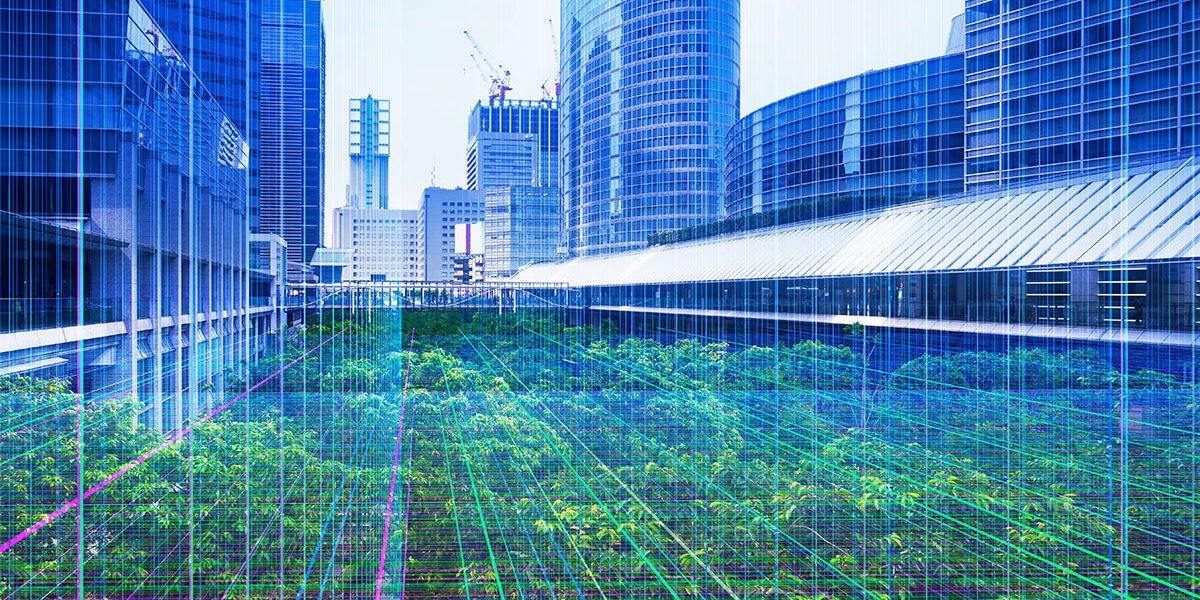Innovation and investment in smarter cities will be key to meeting the world’s climate change targets if we are to reduce greenhouse gas emissions and move towards a net zero emissions economy.
Many countries have made commitments to move to a net zero emissions economy in response to science showing that in order to halt climate change, carbon emissions cannot just reduce, they must stop. With the smarter cities agenda in mind, our cities need to function in a more sustainable way and to do this, we need to look at clean, innovative forms of energy generation, as well as how we change our own behaviours.
Across the globe, there is a huge rise in smart green technology advances, such as self-learning buildings and intelligent technologies – but can they be implemented on a wider scale? And is it possible for microgeneration, in particular, to play a substantial part in reaching a net zero economy for our cities and towns?
Microgreneration
Although the UK has had Feed-in-Tariffs for a while, there is much to learn from other countries. Ireland, for example, is making great strides on microgeneration. In short, a new Irish microgeneration support scheme will allow the public to generate their own renewable electricity (think solar roof panels), with any excess supply being sold to the grid for a fair price. Whilst the consultation is being reviewed, it opens questions as to how the scheme can become accessible for the majority, not the minority.
Not only has there got to be a route to market which seems reliable and realistic, there has to be a mindset shift towards understanding the lasting positive impact of green energy supplies. The Irish take on selling excess energy to the grid for a reasonable price seems like a good start, however, for the individual, it ultimately depends on the size and population of a property. The majority may not be able to generate enough excess energy to be in receipt of this benefit – will it further the socio-economic divide? If this is the case, what can be done to lessen the impact? As with everything, a mindset shift must be coupled with an incentive for us to reach a net zero economy.
On the other hand, I believe that microgeneration – coupled with domestic energy storage as battery technology develops – could help to solve wider issues around energy sustainability. Smart cities inevitably aid our energy security with the shift towards self-sufficiency, thus making us less reliant on imported sources of energy, crucial in an age of global stability. To do this we need to speed up investment in base load energy. Our nuclear energy programme is currently behind schedule which, of course, has a fundamental economic impact.
The move to sustainable energy becomes vital in more than one way. As we continue to rely on cities as middlemen for renewable energy, the supply will continue to be sporadic. For as long as the lack of low carbon options remain and the energy source is reliant on the property of other cities internationally, there will be an ongoing worry of energy security: without microgeneration, how can we be certain that we’ll always be able to provide for our population?
Communities and Energy
The past year and a half has given those of us with an interest in the smart cities agenda much pause for thought. It’s estimated that by 2050 the world’s population is expected to reach 9.8 billion. Nearly 70 per cent (6.7 billion people) are projected to live in urban areas (National Geographic, 2021). However, closer to home in the UK, we are seeing a temporary shift to rural areas arising from the pandemic, but how long will that last? The impact of this shift may not be as detrimental to the smart city agenda, as many perceive – with connectivity and infrastructure lacking in more rural regions, the advance in sustainability in urban areas can only be a positive shift. For a smooth transition to smart city status, we have a huge need for designated smart building regulations, something that is a missing piece of the puzzle at the moment.
The self-learning buildings that have been implemented across Bahrain are a prime example of tight regulations that have paid dividends to wider communities. Dubey and Krarti’s study into high performing residential buildings found that, “improving the energy efficiency of buildings had several benefits including a reduction in electricity consumption, peak power demands and carbon emissions, as well as the creation of a sizeable number of employment opportunities”. This very study shows how energy sustainability can be implemented across residential properties, if the right processes are followed.
Forward Thinking
When looking at the leading smarter cities, their dynamic infrastructure sets them apart, but although leading, what does the future look like? As National Geographic states, in the forward-thinking version of smarter cities, the compact city centres are connected by high-speed rail which in turn knits together employment hubs that reduce urban sprawl and in turn, lessen emissions.
Energy is 100 per cent renewable, and each building is self-sufficient. To reach a net zero economy, it’s a combination of green tech, from discreet ergonomically designed wind turbines to solar panels incorporated into all surfaces of a building, such as the ones designed by the University of California, Los Angeles (UCLA). Creating community and commercial networks across the future city will be key. Ordinarily, metropolitan areas often are home to the larger corporations but what part of the energy consumption issue is their responsibility? How can they support the future of smart cities, utilising their pockets and connections?
Ultimately, energy and the net zero economy are important threads in the agenda of smarter cities. We have an opportunity to become less reliant on outsourced energy supply and creating a sustainable network within a region could be a gateway to self-sufficiency. The smarter cities agenda has great potential to advance and reshape our energy infrastructure, in light of sustainability, and microgeneration could be a fundamental part of this move. It will be interesting to monitor Ireland’s microgeneration support scheme following the consultation, whilst keeping a close eye on the Far East as they continue to be leaders of the smart city arena. We have a lot to learn, and to implement.
How significant of a role does our network of canals and rivers play in achieving a net zero emissions economy? Read our guest blog post by Richard Parry, chief executive of Canal & River Trust, to learn more.
References:
K. Dubey and M. Krarti, King Abdullah Petroleum Studies and Research Center (KAPSARC), An Evaluation of High Energy Performance Residential Buildings in Bahrain, July 2017
National Geographic, Cities of the Future
About the author(s)

Susan Hayman, Baroness Hayman of Ullock
Baroness Hayman of Ullock is a British politician who served as Shadow Secretary of State for Environment, Food and Rural Affairs from 2017 to 2019. A member of the Labour Party, she was Member of Parliament (MP) for Workington from 2015 to 2019.
